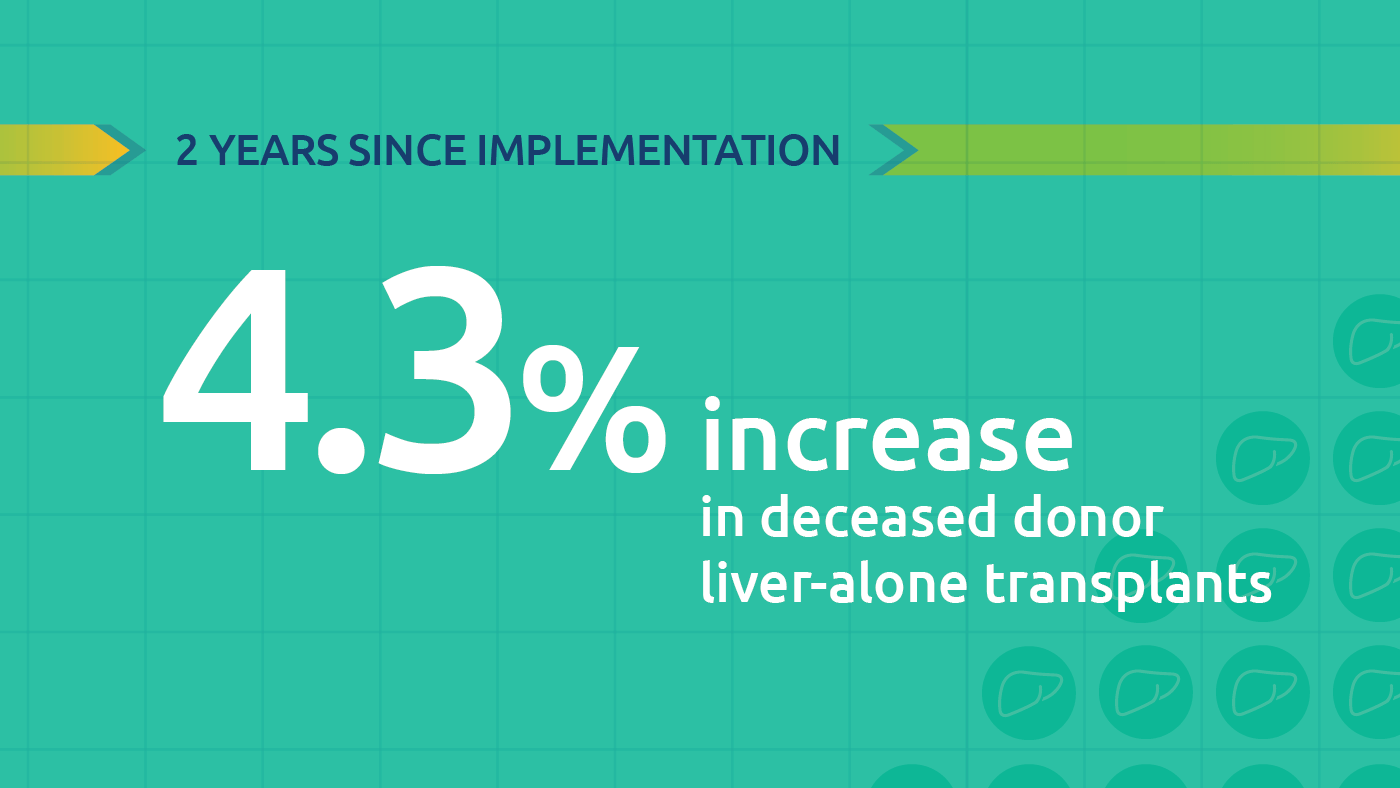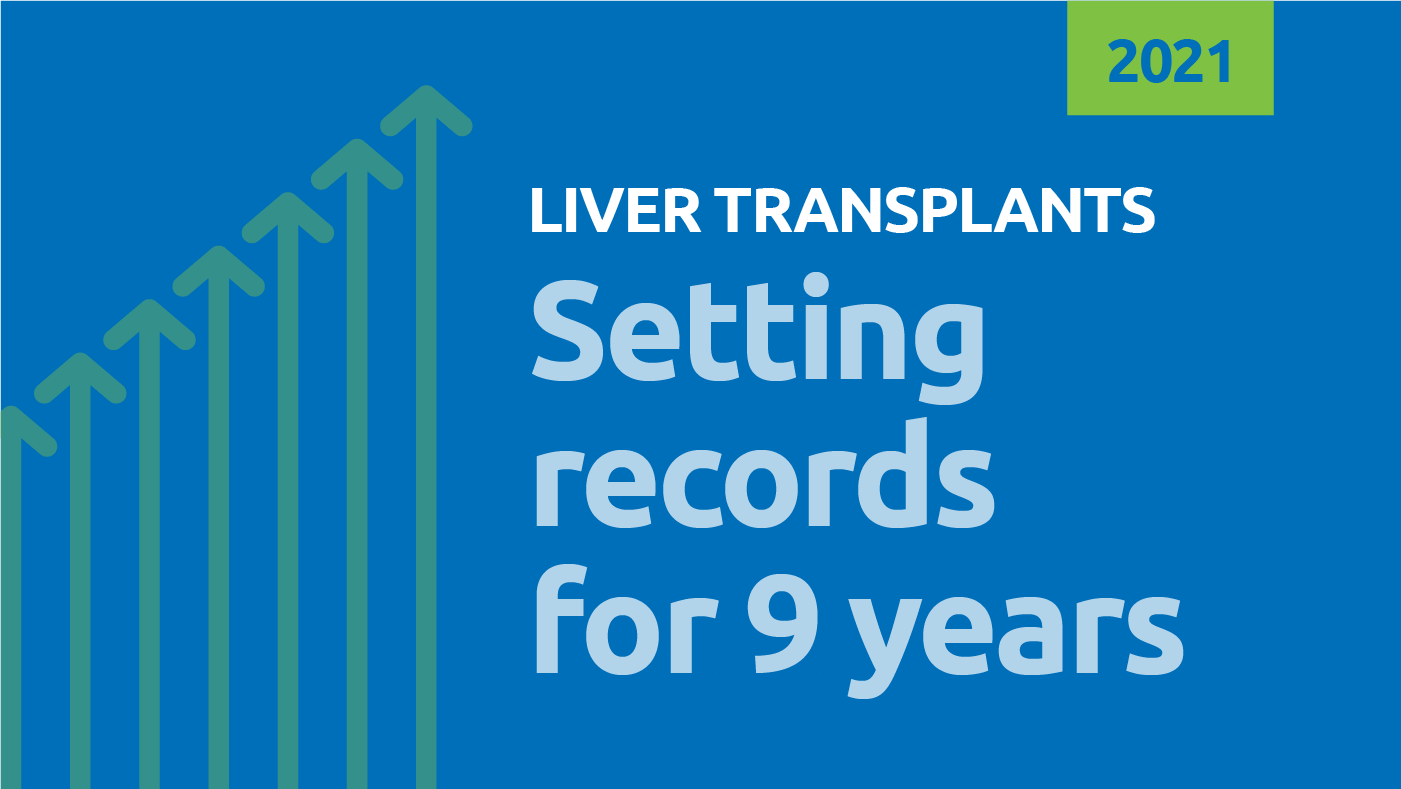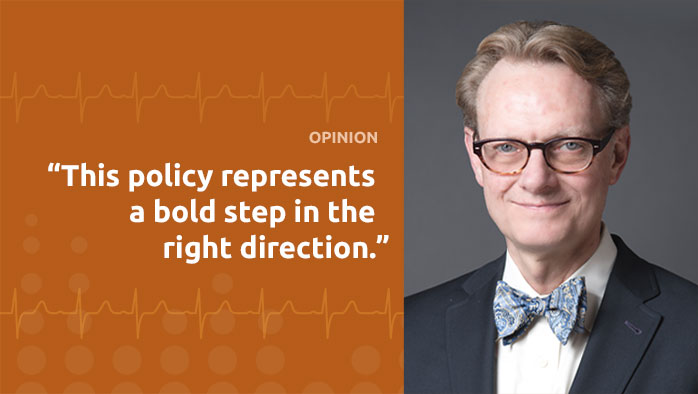Making liver distribution fair and equitable
With more than 10,000 people waiting for a lifesaving liver transplant, ensuring equitable liver allocation is a priority for the entire donation and transplant community. Liver distribution policy makes the system work efficiently and fairly for all transplant patients regardless of where they live, what hospital they choose for their care, or how sick they must be before they are likely to get a transplant.
Since the current liver and intestine policy took effect in 2020, liver transplants have increased by 4.3 percent. This policy prioritizes the medical urgency of liver transplant candidates in relation to the distance between the donor hospital and transplant hospital. Patients who are both most in need and closest to the donor get offers first.
But liver and intestine policy is still undergoing transformation — learn about continuous distribution, the future state of liver and intestine allocation.
Liver-intestine news
Liver treatment options added for HCC exception candidates
Additional diagnosis code changes to be implemented in a later phase.
Offer Filters for liver and heart now available
Offer Filters adds data-driven, multi-criteria filters to organ offers at a program level.

Read stories of hope about patients like Abby
How do patients benefit?
Data monitoring of the current policy shows:
- Fewer people die waiting for a liver transplant
- More children, 12 and older, are receiving liver transplants
- How sick a patient is takes priority over where they live
How it works
How are patients matched?
- How are candidates matched with available organs?
- How are we working to improve the matching process?
How was the policy developed?
This transformative policy was developed by transplant experts, organ recipients and donor families from around the country, with consideration of more than a thousand public comments.
![]()
How do we track policy success?
We look at the data.
Liver transplants* increased by 4.3 percent since policy implementation.
What is medical urgency?
- What are Model for End-Stage Liver Disease (MELD) and Pediatric End-Stage Liver Disease (PELD)?
- How do they work?
- How are we working to improve them?
What are exception scores?
- Why might a candidate need an exception score?
- How is that score determined?
- What is the National Liver Review Board (NLRB)?
For patients
About liver transplantation
Information for patients on: Who needs a liver transplant? How are liver transplants performed? How do I become a liver transplant candidate?
What happened in public comment? See what the community had to say. View comments
Essential reading and resources

More than 15,000 liver transplants performed in first two years of acuity circles policy

9th year of record-setting liver transplants
Despite ongoing challenges from the pandemic, more patients than ever are receiving lifesaving liver transplants.

The liver allocation policy is a success we need to share: Terry Box, M.D., liver recipient
Box’s op-ed highlights how effective policy development is resulting in sicker patients getting liver transplants faster.

Data dashboard monitors equity in access to transplant
UNOS researchers discuss how the OPTN tracks equity through Access to Transplant Score.
Policy information on OPTN
- Liver allocation system
- Liver and Intestine OPTN committee
For patients
- Collection of resources
- Brochures: Questions and answers for transplant candidates (English and Spanish versions)
For professionals
- Toolkits: allocation calculators, policy and guidance, patient education
- on UNOS website
- on OPTN website
